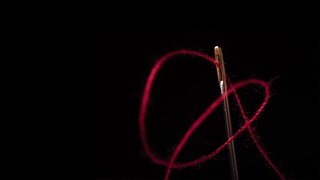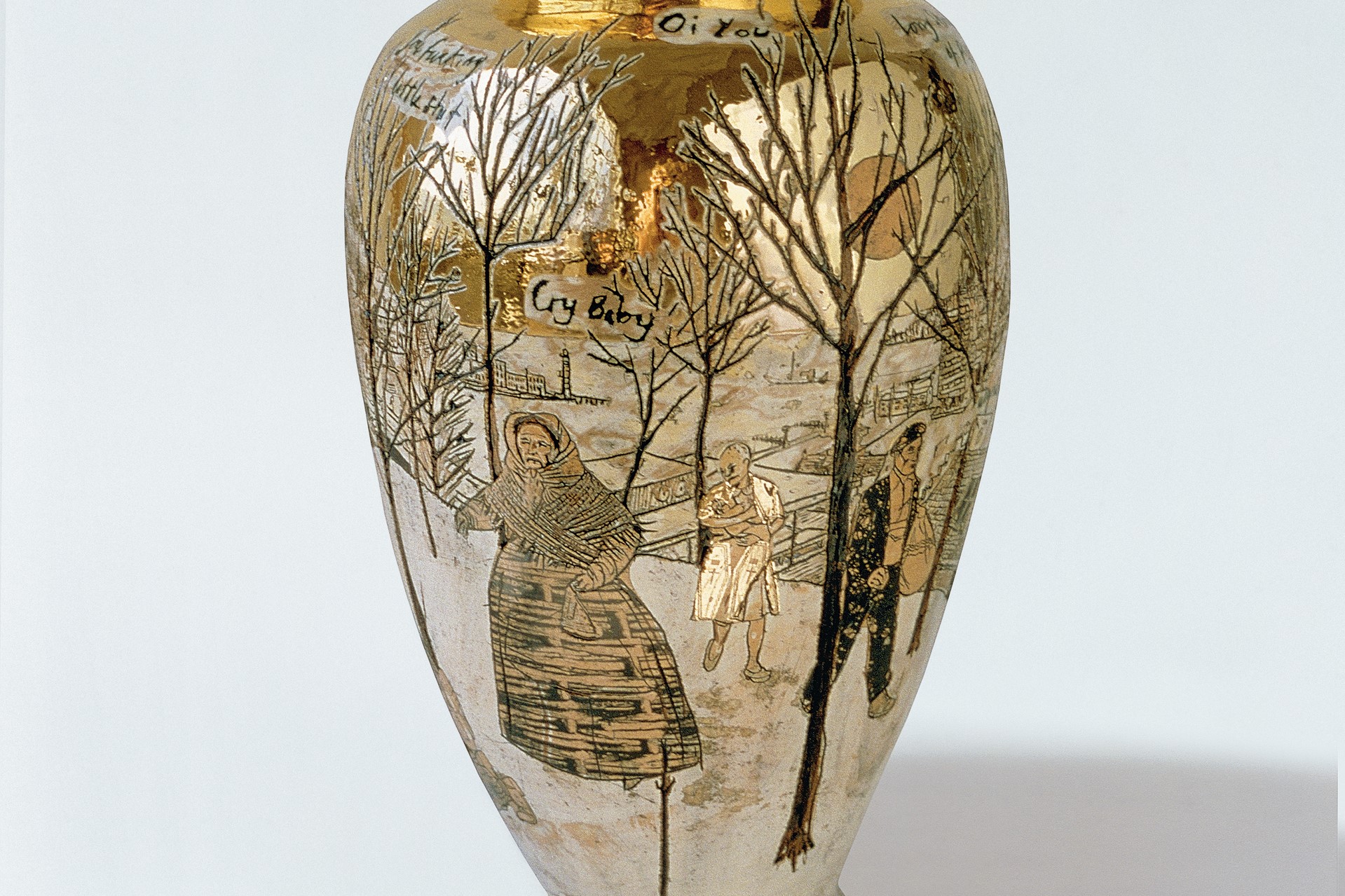
Style
The sewing thread | Issue 18 | 2020


Alexandra Howe talks about the artist Grayson Perry
‘It’s about time a transvestite potter won the Turner’, said Grayson Perry, when he was awarded the Turner Prize for contemporary art in 2003. He has since said that he doesn’t like to be known simply as a potter; after all, you wouldn’t describe Damien Hirst as a taxidermist. His methods include printmaking, drawing, embroidery and other textile work. Still, he is probably best known for his cross-dressing and his ceramics: classically-proportioned vases and urns, decorated with hectic figures, patterns and text. He claims that the humility of pottery was part of its attraction; it’s not ‘shouty’ like other forms of contemporary art. Traditionally, pottery has not even been considered Art with a capital A, but consigned instead to the realm of craft, with the somehow humbler, more innocent connotations of that word. Perry plays on our expectations. He says his work ‘sneaks up on people and seduces them’. Take We’ve Found the Body of Your Child (2000), a gorgeous, incandescent vase, 49 centimetres high, glazed with gold, silver and white. It is dazzlingly beautiful, elegant. And yet, on closer inspection, it is troubling. Gothic figures with skull-like faces tramp a barren foreground; etiolated trees, subversive slogans wound among their branches, stand like black daggers in the snow. It’s a shocking, awkward piece, reminiscent of a three-dimensional Brueghel, the sixteenth-century Flemish painter whom Perry counts among his favourite artists.
The man who says he made no money from his art until he was 38 now sells his pots for up to £100,000.
After winning the Turner Prize, Perry says he was asked by a member of the press: ‘Grayson, are you a loveable character or a serious artist?’ His answer was ‘Can’t I be both?’ He is one of the most successful British artists of his day, but Grayson Perry has also established himself as a commentator on social class, definitions of ‘taste’ – and the contemporary art world, interrogating its eccentricities, testing its ideas of quality, exploring what it means to be an artist in a world where anything goes and therefore nothing is new.
His attitude is typically teasing. In a series of lectures broadcast last year on the BBC World Service, he said that the idea of contemporary art has become ‘incredibly baggy’. Specifically, it’s like ‘one of those very cheap dustbin liners’, into which you can shove just about anything and call it art. He pointed to Marcel Duchamp, the twentieth-century French artist who brought a urinal into an art gallery. The object became a work of art because the artist had decided it would be designated as such. How do you know when you’re looking at art? Perry gave a series of tests. Is it in a gallery? Was it made by an artist? Is it bigger than two metres and priced higher than five figures? Do the people looking at it have beards and glasses and single-speed bikes?
It’s a neatly reductionist proposition. Perry likes to laugh at the ‘pomposities and contradictions’ of the art world, its neurotic fear of accessibility. There is a feeling that if the masses are allowed in, allowed to understand art, somehow it will lose its value. Even the language of art is carefully cultivated so as to be impenetrable; Perry describes it as a bit like reading ‘inexpertly translated French’.
Some accuse him of glibness; others see him as a breath of fresh air, a colourful, provocative gadfly. Almost everyone agrees he is original. He says: ‘If I have one prejudice, it’s against clichés. I think it’s because my mother ran off with the milkman.’
© Norton Rose Fulbright LLP 2025